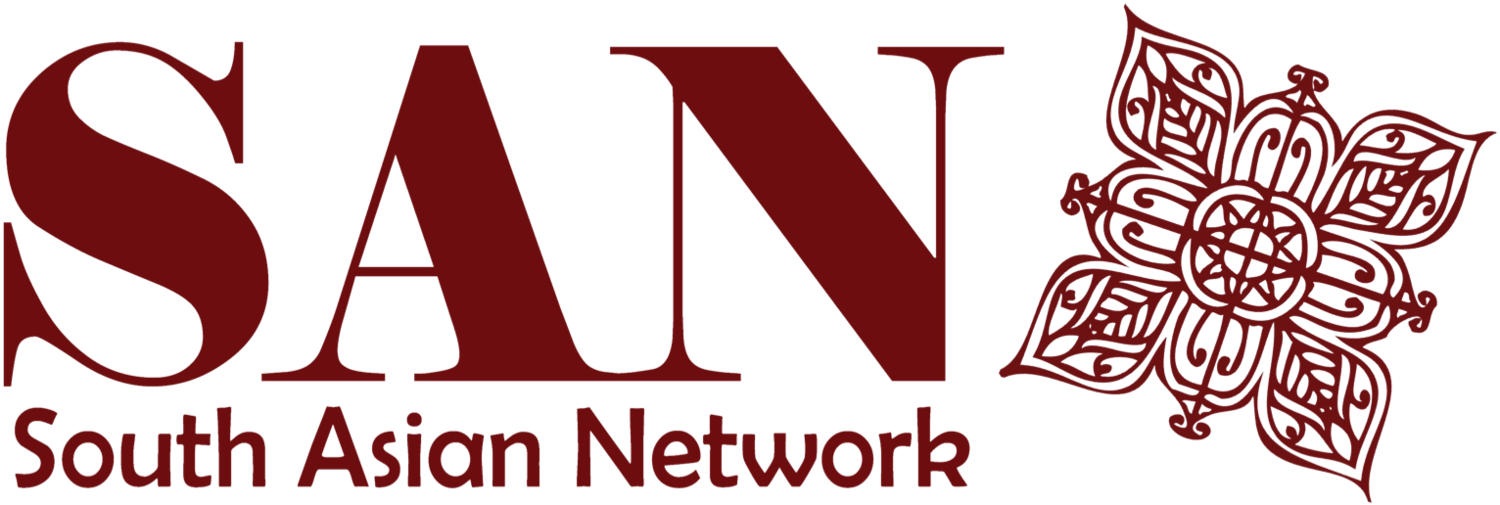Harsirat Kaur, Artesia, California — October is Domestic Violence Awareness Month, associated with the purple color and its symbol characterized by a purple ribbon. Throughout the month, organizations in the gender-based equity field highlight their work in domestic violence prevention, treatment, and recovery for survivors.
South Asian Network (SAN) is a 33-year old grassroots organization based out of Artesia, California operating out of 4 main units; AWAZ (Voices Against Violence) being one of them. For the month of October – the Director of Programs, Zainab Qureshi; the Program Manager for AWAZ, Riffat Rahman; the Program Coordinator for AWAZ, Sachini Rajapaksa; and the Community Organizer, Sirat Kaur proposed an idea for a march to raise awareness against the prevalence of domestic violence in the South Asian households. The initial meeting led to the idea of collaborating with our sister organizations working in the same space, namely, Satrang, Saahas for Cause, and the South Asian Helpline and Referral Agency (SAHARA) to join SAN on the last Sunday of the month to walk in solidarity against domestic violence.
The march started at the crossing of 183rd and Pioneer Blvd where Qureshi gave the introductory address to everyone present (SAN staff, members from Satrang, Saahas, SAHARA, and volunteers) highlighting the expanse of domestic violence in the South Asian households and the crucial work the organizations do to empower the survivors of violence (different types highlighted in the figure below) via case management, referrals, and financial and legal representation.
The march began on Pioneer Blvd, characterized by roaring chants, handing out flyers, and acknowledgement by bypassing automobile horns in support. When in front of Frontier Heritage, representatives from SAHARA shared their work in extending support to the survivors of violence. The march ended in Artesia Park after hours of camaraderie and traction from the bystanders.
In 2022, South Asian Network assisted 179 survivors, gave 146 referrals, served 1920 hours to support the survivors, conducted 21 workshops, and gave free legal assistance worth more than $200,000 out of its Voices Against Violence (AWAZ) unit.
“The Domestic Violence Awareness March raises awareness about the pervasive issue of domestic violence within the South Asian community. It serves as a platform to challenge cultural norms and societal stigmas that perpetuate such violence, ultimately working towards ending the cycle of abuse.”
– Sachini Rajapaksa, Program Coordinator
As per a study conducted by Rai and Choi in 2021, 48% of South Asians in the U.S experienced physical violence, 38% experienced emotional abuse, and 35% experienced economic abuse. They also write, “The South Asian culture disempowers individuals experiencing domestic violence from recognizing and reporting victimization.”
SAN aims at reaching those in need of assistance even though it can be difficult. SAN wants to ensure that survivors know they can access support to navigate their struggles in a professional and safe environment.
Reach out to SAN at saninfo@southasiannetwork.org and/or at (562)403-0488. SAN has its offices in Artesia and Little Bangladesh. At SAN, there are professionals who understand the cultural barriers that cause suffering in silence and wants to support you in ways you may need.

